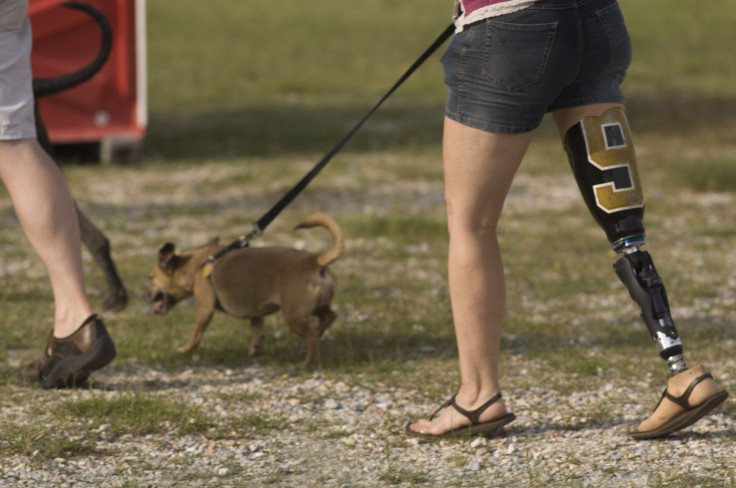New Prosthetic Leg Helps Patients Regain Feeling Post-Amputation, And Fights Phantom Limb Pain

Innovations in prosthesis have truly reached unprecedented heights in recent years, ranging from advancements in sensitivity, and life-like appearance, but a new prosthetic creation produced in Austria may actually help you regain feeling in your lost limb. Professor Hubert Egger of Linz University has created the world’s first artificial leg that can actually simulate the feelings of a real limb, while also helping amputees recover from phantom pain.
The creation of the limb was the result of Egger’s two-part process, which involved rewiring nerve endings within the patient’s stump to healthy nerve endings in the patient’s thigh, then placing those nerve endings closer to the skin surface. Once this was done, six sensors were fitted to the bottom of the prosthetic foot, to measure the pressure of the heel and toe, as well as foot movement. These sensors were then linked to stimulators inside the shaft of the limb where the stump is placed.
Lucky Austrian amputee and former teacher Wolfgang Rangger is the first to test the prosthesis, and has been doing so for six months. “It feels like I have a foot again,” he told Business Insider. “I no longer slip on ice and I can tell whether I walk on gravel, concrete, grass, or sand. I can even feel small stones.”
The active 54-year-old who lost his right leg in 2007 due to a blood clot, described a life-changing difference once he started using Egger’s “feeling prosthetic.” He continues to run, cycle, and go climbing like he did before he lost his leg. Each time Rangger takes a step, the sensors within the limb are activated, sending messages to his brain.
“In a healthy foot, skin receptors carry out this function, but they are obviously missing here. However, the information conductors — the nerves — are still present, they’re just not being stimulated,” said Egger. “The sensors tell the brain there is a foot and the wearer has the impression that it rolls off the ground when he walks. All things considered, the procedure is a very simple one given the results.”
To help him create the new prosthetic limb, Egger used his previous knowledge from another groundbreaking innovation. In 2010, Egger created a mind-controlled prosthetic arm, using neurons from the previous limb to help the user maneuver it. He claims the same idea applies to the leg, just in reverse; signals are sent from the prosthesis to the limb, instead of the other way around.
In addition to renewing feeling in his lost leg, Rangger says one of the best benefits of his new limb is that he no longer deals with intense pain. Egger points out that most of the phantom pain amputees experience comes from the brain’s increased sensitivity when frantically trying to map a missing limb. He also notes that some of the pain from an amputation often comes from the trauma of reliving an accident or illness.
“I was barely able to walk with a conventional prosthesis, didn’t sleep for more than two hours a night, and needed morphine to make it through the day,” Rangger said. But after receiving the operation last October, his pain went away in a matter of days.
“Ranger is a very different person now to the one I met in 2012,” Egger said. “It struck me that he never laughed and he had these dark rings under his eyes. It was awful.”
But Rangger has improved significantly since the prosthesis, giving Egger hope that many others can enjoy the same improvement. He notes that the surgery recovery time is quick, and comes with minimal health threats. The only risk, he claims, is that the nerves may not connect and that feeling does not come back for the patient.
Egger’s next step is to try and make his prosthetic, which currently costs between $11,240 and $33,846, more affordable. He hopes now that the limb has been tested and is ready for use, small companies will join him in producing the prosthesis, making it less expensive.
Egger is very optimistic about the potential of his new “feeling limb” and the quality of life it can provide for amputees. “By giving them back mobility, they also regain their independence and are able to reintegrate into society. That’s what I work for.”



























